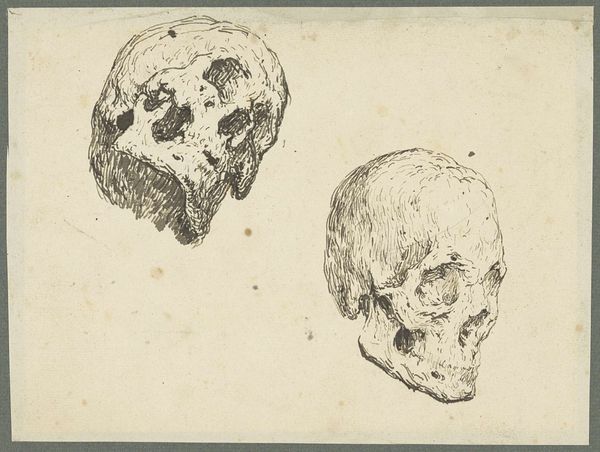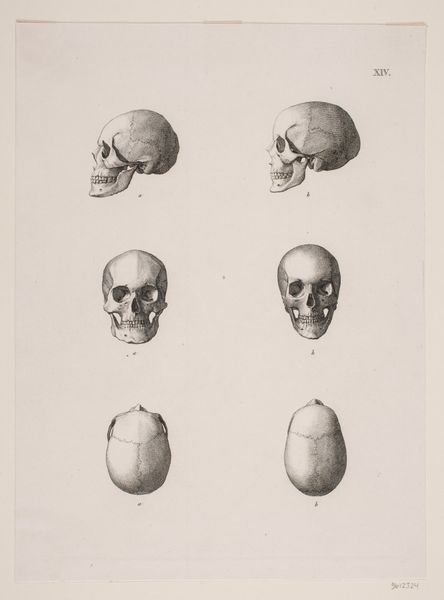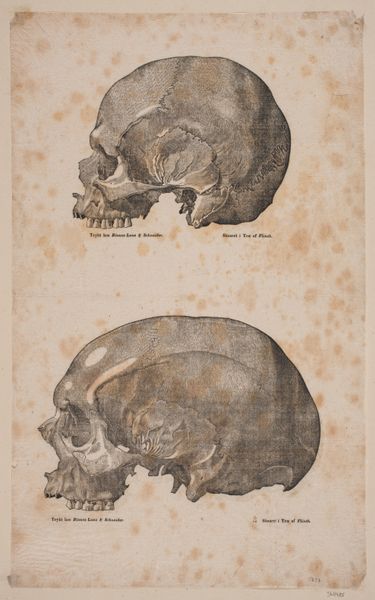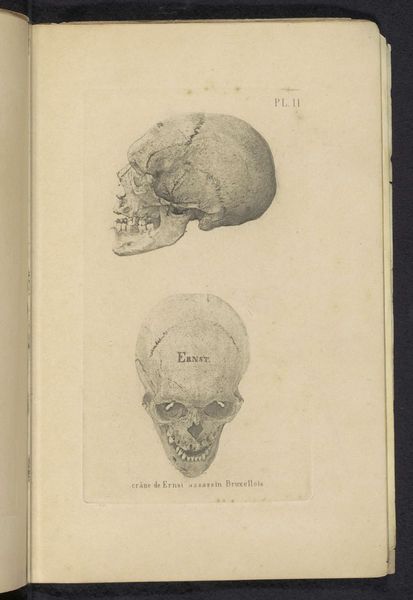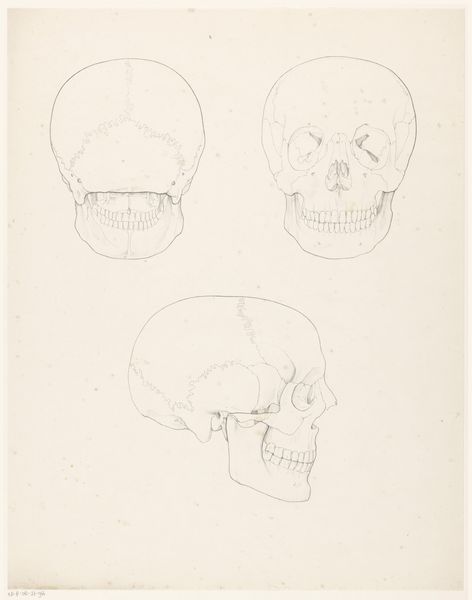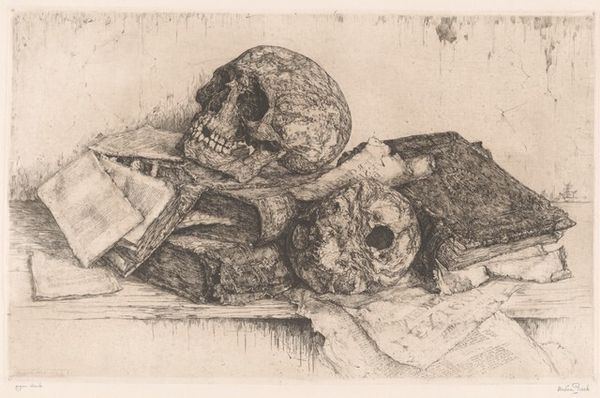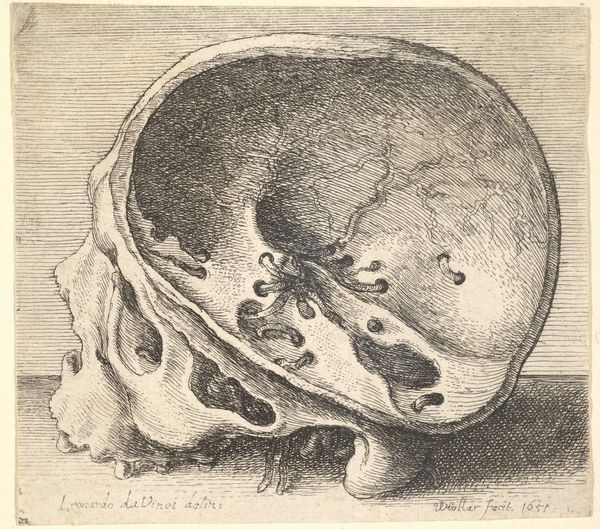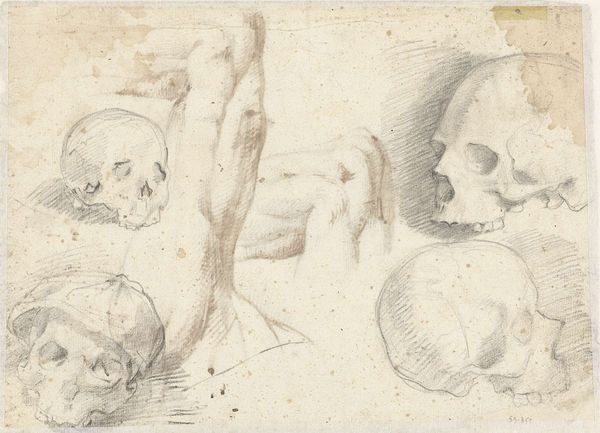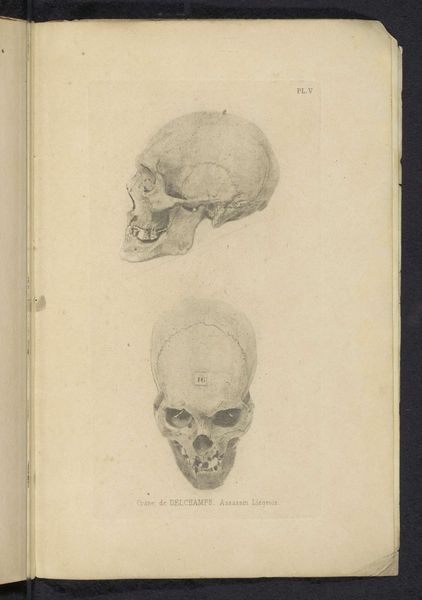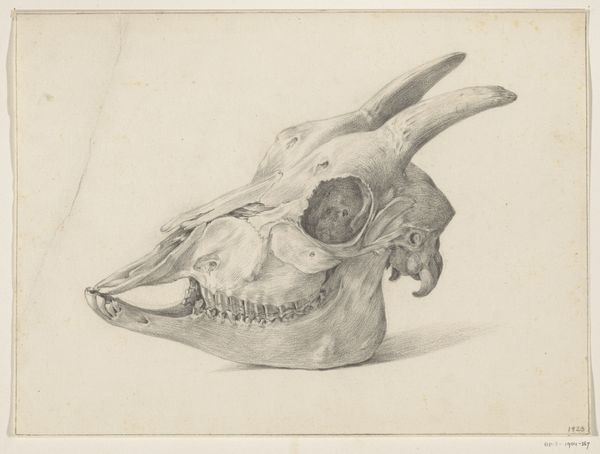
Three human skulls, study for "Democritus in Meditation" 1662
0:00
0:00
drawing, print, etching, drypoint
#
drawing
#
baroque
# print
#
pen sketch
#
etching
#
pencil sketch
#
figuration
#
vanitas
#
history-painting
#
drypoint
Dimensions: Sheet: 5 9/16 × 3 5/8 in. (14.2 × 9.2 cm)
Copyright: Public Domain
Editor: We're looking at "Three human skulls, study for 'Democritus in Meditation'," created in 1662 by Salvator Rosa. It's an etching, and I find it quite striking, especially the way the skulls are arranged almost haphazardly. What's your take on this piece? Curator: Considering Rosa’s social circle, this wasn’t just some morbid fascination, but an exploration of materials readily available – human remains from medical schools or battlefields. Each skull is rendered with such meticulous detail, it is clearly from direct observation. I believe that it invites reflection on the nature of labor and the value placed on different forms of making in 17th-century art. It is vanitas. Don’t you think? Editor: That's fascinating. I hadn't thought about the material aspect that deeply. Is there any symbolic significance of him stacking them on top of each other? Curator: Indeed. Think of it in terms of a visual inventory or a workshop catalogue of the elements needed to tell the tale of the human form as fleeting, stacked, like so many commodities available to the early modern artist. Consider how that resonates with a world becoming ever-more interconnected. Editor: So you're suggesting it critiques the commercialization of artistic creation? It's a bit like questioning the status of high art. Curator: Precisely. It makes us rethink the social context of art production during that era. Rosa's piece becomes less about the artist’s individual genius, but about means of production and consumption. Editor: That perspective gives me a lot to think about! Curator: As it should. Remember to explore the broader socio-economic forces that influenced artistic output of the time and think about all the skulls we're not seeing as raw material in the service of great "art."
Comments
No comments
Be the first to comment and join the conversation on the ultimate creative platform.
